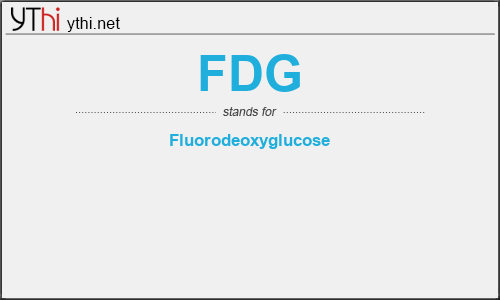What does FDG mean? What is the full form of FDG?
The Full Form of FDG is Fluorodeoxyglucose.
Fluorodeoxyglucose (18F) (INN), or fluorodeoxyglucose F 18 (USAN and USP), also commonly called fluorodeoxyglucose and abbreviated [18F]FDG, 18F-FDG or FDG, is a radiopharmaceutical used in the medical imaging modality positron emission tomography (PET). Chemically, it is 2-deoxy-2-[18F]fluoro-D-glucose, a glucose analog, with the positron-emitting radionuclide fluorine-18 substituted for the normal hydroxyl group at the C-2 position in the glucose molecule.
The uptake of 18F-FDG by tissues is a marker for the tissue uptake of glucose, which in turn is closely correlated with certain types of tissue metabolism. After 18F-FDG is injected into a patient, a PET scanner can form two-dimensional or three-dimensional images of the distribution of 18F-FDG within the body.
Since its development in 1976, 18F-FDG had a profound influence on research in the neurosciences. The subsequent discovery in 1980 that 18F-FDG accumulates in tumors underpins the evolution of PET as a major clinical tool in cancer diagnosis.[3] 18F-FDG is now the standard radiotracer used for PET neuroimaging and cancer patient management.[4]
The images can be assessed by a nuclear medicine physician or radiologist to provide diagnoses of various medical conditions.
FDG
means
Fluorodeoxyglucose![]()
Translate Fluorodeoxyglucose to other language.


Leave a Reply
You must be logged in to post a comment.